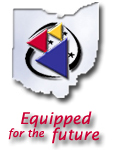Title of Activity 2: A Learning Experience
Time: 25 m
Who:
Purpose: To highlight positive and negative learning experiences. To introduce PCC (Purposeful, Contextual, Constructivist) by using the participants' frame of reference.
Key discoveries: By having participants think about a time that they learned something, this activity can be used to illustrate that all of us are learners, and EFF is about all learners, not just a certain population of learners.
Target audience: Teachers and administrators
Format:
Small group
Large group discussion
Materials:
- Flip chart paper for each group with 2 columns - positive and negative or "Positive and Negative Learning" handout for each table
- Large group chart paper with columns, black markers
Facilitation notes: When you write down participants' comments, be sure to try to capture the essence of what they said without taking the time to write very single word down.
Links to other activities: This could also link to a discussion about assessment if you want to focus on the "evidence" participants talked about - "how did they know they learned." Have them compare how they know they have learned something to the way their learners know they are learning.
Description of Activity:
Step 1: Small groups of 4 people (self-select). Begin by asking participants to think of a time that was their worst and best learning experience. Share in their group why that was a negative or positive experience. What sort of interaction were you having with the person attempting to help you learn? Be specific. The record keeper will jot down some key phrases on the worksheet that captures the groups' ideas of why the experiences were positive or negative.
Step 2: When everyone is done writing, ask groups to share their responses. While they are sharing with the large group, jot down some of the key phrases that captures their ideas. By doing so, together you and the audience should be able to create a picture of what adult learning looks like. Really work at drawing out their responses, don't allow them to generalize. "How did you know what it was you needed to learn?" "How did the teacher/mentor/friend figure out what you already knew before helping you learn something new?" "How did you know that you had learned it [whatever it may be]?"
By posing questions during this first activity - just as informal prompts, nothing really structured -
they will already be beginning to hear the questions that they need to pose of their own learners.
Step 3: Charts of positive and negative learning experiences will be available for the next activity.
Segue: Audience comments should provide the ideal segue for a discussion about PCC. If the audience learned best through particular experiences, how do teachers provide a similar environment where great learning can occur for their students?
